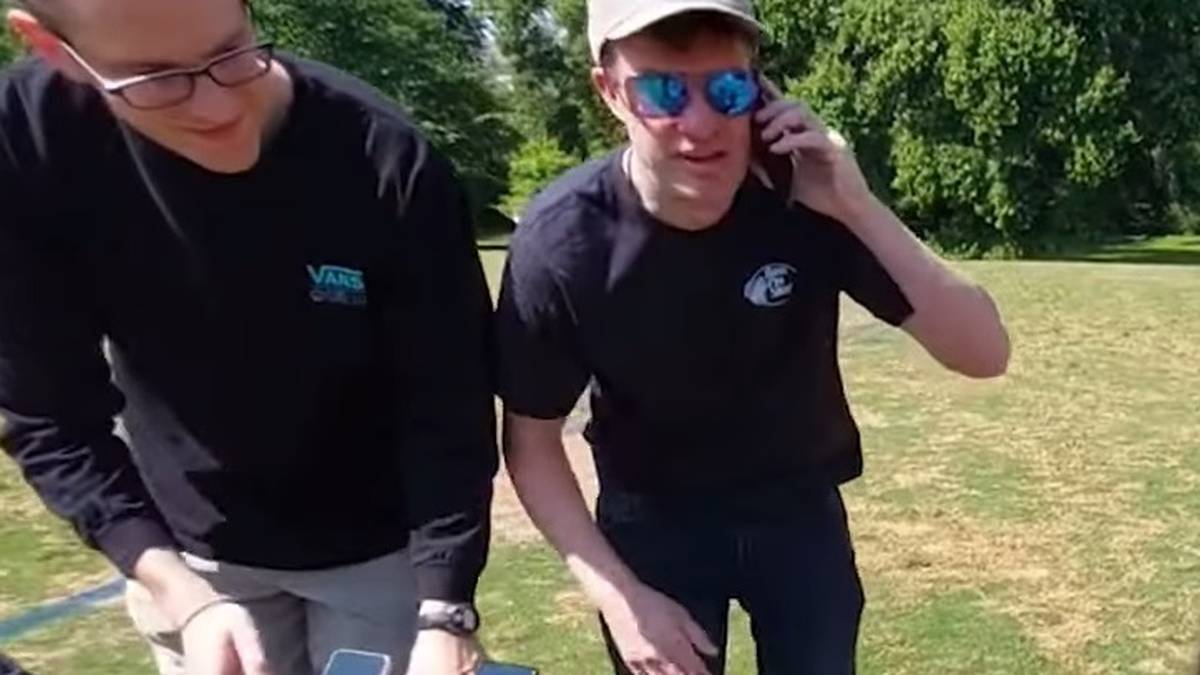Share this article
Reminder, this is a Premium article and requires a subscription to read.
Using satellites as cell towers in the sky for 100 per cent coverage could be one of the big telco trends of 2024.
One NZ has partnered with Elon Musk’s Starklink to provide a satellite-to-mobile
Those deals will initially give Kiwis the ability to send and receive a text when outside cellular network coverage.
But both Starlink and Lynk plan to provide voice calling and data for mobile phones, too.
And overnight, Lynk demonstrated what it billed as the world’s first voice call via satellite – or at least the first involving stock-standard mobiles rather than a special, expensive satellite phone.
The slightly echoey via-satellite call (see video above) took place in the US state of Virginia, using two off-the-shelf Samsung mobiles (new satellite-to-mobile tech employed by Starlink and Lynk uses the same radio frequencies as Earth-based cellular networks, fooling any mobile into thinking it’s taking a call from a regular celltower).
“We have not seen any other video, or even a voice recording, providing hard evidence of two-way voice calls using standard mobile phones connecting directly to a satellite,” Lynk spokeswoman DJ Freyman told the Herald.
The jape was replicated locally. “We have successfully made satellite voice calls using a normal phone and are conducting further field trials,” 2degrees spokesman Quentin Reade said.
“The next one is in Hunua Monday next morning, where we will make calls in an area with no terrestrial cell coverage.”
While broadly enthusiastic about the new technology, 2degrees CEO Mark Callander earlier tempered expectations, saying it would be some time before everyday satellite-to-voice calling was practical.
Right now, Lynk can offer the service for anywhere in New Zealand, the firm’s three satellites only cross New Zealand a half-dozen times a day, offering a three- to-five-minute connectivity window each time. That was fine for text messaging – if you were patient for a reply – but would make for many interrupted voice calls or mobile internet sessions.
At a June event in Auckland, where he co-presented with Callendar, Lynk COO Dan Dooley said: “I wish we could snap our fingers and get 1000 satellites up and have ubiquitous coverage, but that’s not possible right now.
“So we can’t say we can give you ubiquitous coverage. We can give you ubiquitous coverage, but only for a few minutes at a time.”
Another six Lynk satellites will be launched in January (with propulsion systems from New Zealand’s Dawn Aerospace), which Dooley said would cut the time between flyovers to about one hour and 55 minutes.
Lynk plans to launch another 40 to 50 satellites in 2024, then another 250 to 300 in 2026 – before eventually blanketing the planet with 5110 birds.
At the June event, 2degrees showed a video of a text exchange via a Lynk satellite, in a trial that took place at a mobile blackspot 30 minutes north of Whanganui.
Like Spark, it has yet to put a date on beginning a text service with Lynk. Necessary mobile network upgrades will take several months. The 2degrees-Lynk text trial involved phones with Lynk Sim cards. The next trial will involve handsets with 2degrees Sim cards.
Meanwhile, Spark continued its relatively low-key approach to satellite to mobile.
“Our focus at the moment is on the preparation and testing required to enable a satellite-to-mobile text trial for Spark customers, as this is the satellite capability that will be available in the nearest term for customers to be able to access and use. We are working with Lynk to launch our customer trial as soon as this preparatory work is complete,” a spokeswoman for the telco said this morning.
One NZ has sniffed that Lynk (at least for now) has only three satellites.
But its rivals have pointed out that while Starlink has more than 4700 satellites in low Earth orbit, it needs larger second-generation models in orbit to support satellite-to-mobile connectivity – and has so far only launched a handful.
One NZ launched a “100 per cent Mobile Coverage” campaign on the back of its Starlink partnership, which it says will offer a text-based service from late 2024, with voice and data to follow on an unspecified timeline.
In July, the Commerce Commission sent a “stop” letter, calling the campaign potentially misleading. One NZ said it disagreed with the regulator, but that its “100″ marketing was ending, as always scheduled. The telco moved to a new “Coverage like never before, launching 2024″ tagline.
Today, One NZ spokesman Matt Flood said: “This is a brand new breakthrough technology, and we’ll only launch the service when an SMS text or MMS message can be sent within a matter of minutes – not hours, as may be offered by other carriers connected with far fewer satellites.”
Jonathan Brewer, a consulting engineer who offers regulatory and infrastructure advice to industry and government clients, told the Herald that punters shouldn’t hold their breath for mass market satellite service from any of the contenders.
In Brewer’s view: “They’ll be lucky if they have calling working by 2026.”
Chris Keall is an Auckland-based member of the Herald’s business team. He joined the Herald in 2018 and is the technology editor and a senior business writer.
Share this article
Reminder, this is a Premium article and requires a subscription to read.
But while the local index perked up, investors are still hanging back.
Spark, 2degrees partner Lynk makes ‘world-first’ satellite-to-normal … – New Zealand Herald

